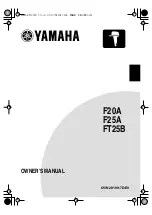
Introduction of the BIOS
3-23
User’s Manual
System States and Power States
Under ACPI, the operating system directs all system and device power state transitions. The
operating system puts devices in and out of low-power states based on user preferences and
knowledge of how devices are being used by applications. Devices that are not being used
can be turned off. The operating system uses information from applications and user settings
to put the system as a whole into a low-power state.
Table 5-1: Wake Up Device and Events
The table below describes which devices or specific events can wake the computer from
specific states.
These device/events can wake up the
computer……
……from this state
Power switch
Sleeping mode or power off mode
RTC alarm
Sleeping mode or power off mode
LAN
Sleeping mode or power off mode
Modem
Sleeping mode or power off mode
IR command
Sleeping mode
USB
Sleeping mode
PS/2 keyboard
Sleeping mode
PS/2 mouse
Sleeping mode
Sleep button
Sleeping mode
Table 5-2: Effect of Pressing the Power Switch
If the system is in this
state……
……and the power switch
is pressed for
……the system enters this
state
Off
Less than four seconds
Power on
On
More than four seconds
Soft off/Suspend
On
Less than four seconds
Fail safe power off
Sleep
Less than four seconds
Wake up
Power Management:
Four options:
➤
User Define
User Define defines the delay for accessing the power modes.
➤
Min Saving
When the three saving modes are enabled, the system is set up for minimum power
savings.
Содержание AB-BE6
Страница 2: ......
Страница 4: ......
Страница 10: ...1 6 Chapter1 BE6 1 4 The System Block Diagram Figure 1 3 System diagram of the 440BX chipset ...
Страница 76: ...B 6 Appendix B BE6 ...
Страница 80: ...C 4 Appendix C BE6 ...
Страница 94: ...D 14 Appendix D BE6 ...
Страница 96: ...E 2 Appendix E BE6 ...
Страница 102: ...F 6 Appendix F BE6 ...















































